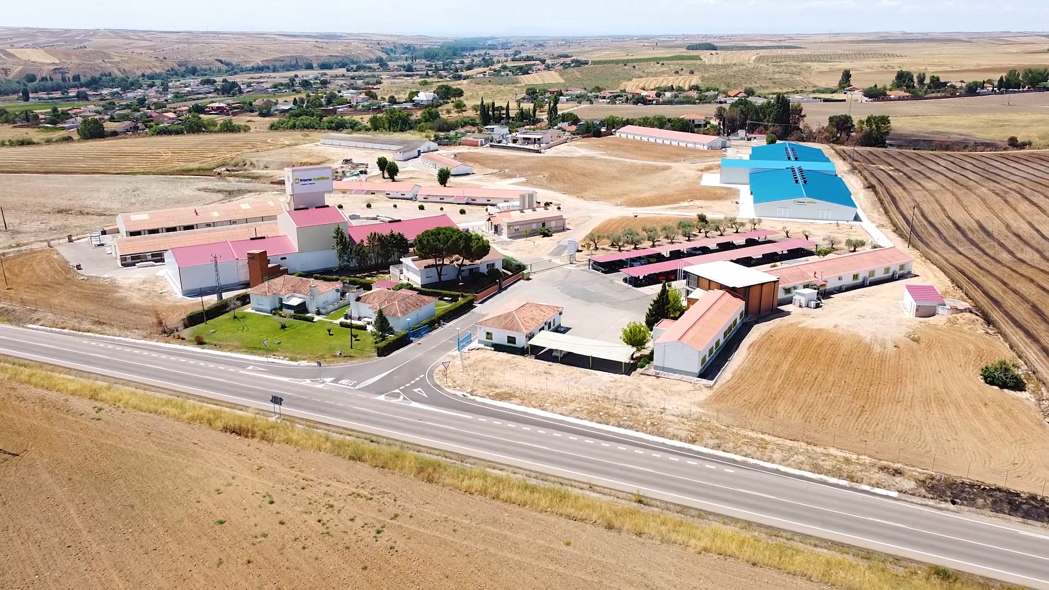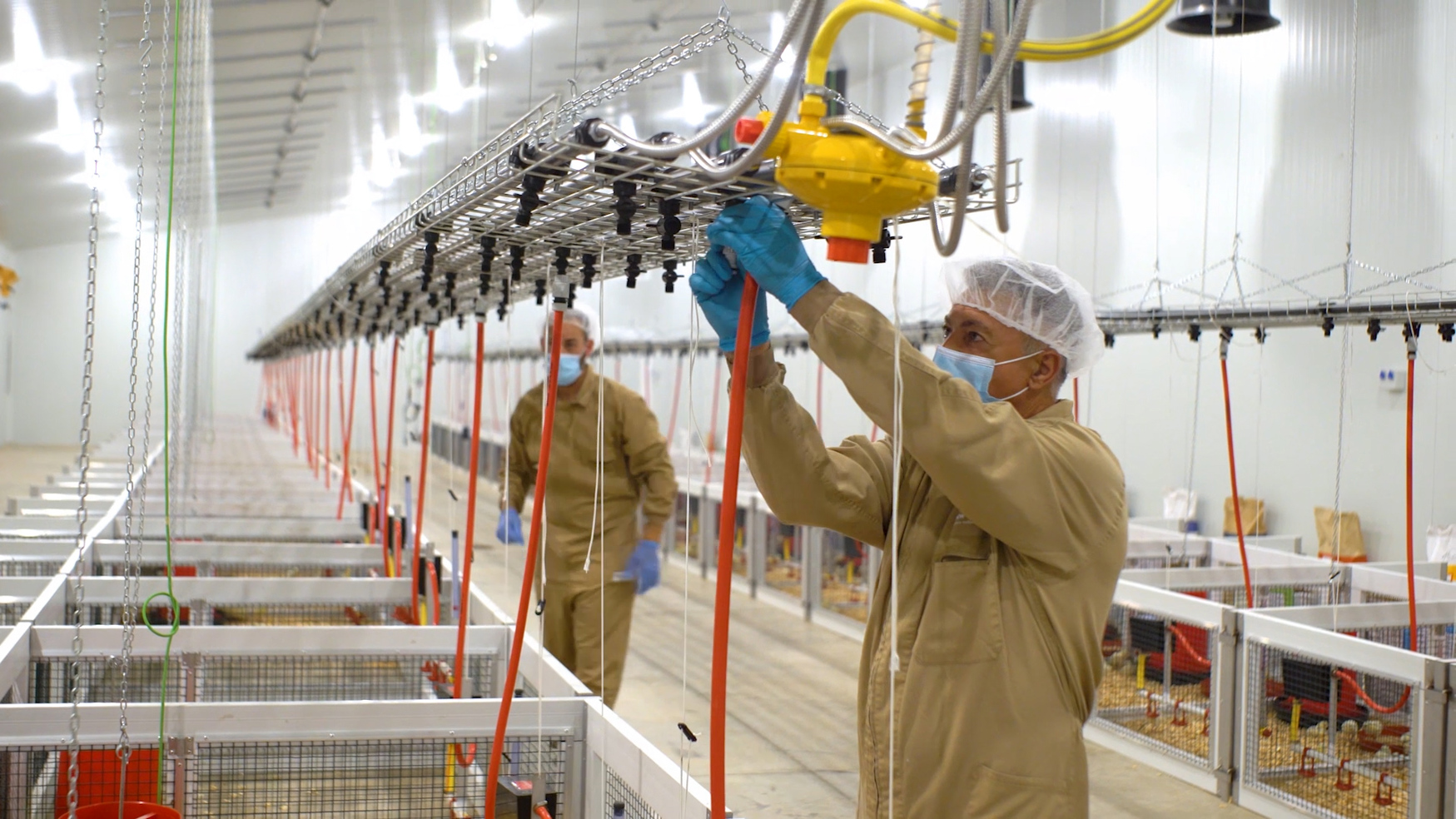Trouw Nutrition hosts opening of Poultry Nutrition and Health Unit
The new research unit focuses on supporting flock health and performance without antibiotics
October 2021, Amersfoort the Netherlands – Trouw Nutrition, the animal nutrition division of Nutreco, celebrated the virtual grand opening of the Poultry Nutrition and Health Unit, in Castilla la-Mancha, Spain, on 14 September 2021. The event welcomed more than 1,000 registered customers, research and development stakeholders, academia, and poultry farmers to present the new unit and learn more about strategies to reduce the use of antibiotics in poultry production.

Research unit spotlights versatility, innovation, and transparency
The latest addition to the Trouw Nutrition Poultry Research Centre, the Poultry Nutrition and Health Unit features four study rooms equipped to conduct different studies simultaneously. Researchers can replicate climate and environmental conditions such as humidity, temperature, and stocking density to simulate production environments around the globe. These controls inform research to evaluate the efficacy of feed, farm, and health strategies.
Each study room in the facility can accommodate 48 pens that can be adjusted to reflect different stocking densities. Seven water reservoirs per room allow researchers to randomize different water treatments. Digestibility and bioavailability cages help precision nutrition research, including how tailoring ingredients can influence feed intake, nutrient bioavailability, and feed conversion ratios.
Microbiological technologies and data analysis support research at the facility. For example, scientists can combine molecular biology techniques such as PCR (Polymerase Chain Reaction) with traditional culture methods and then conduct added analyses in context with flock performance data. The resulting insights aid researchers in standardizing animal models that improve understanding of poultry health concerns including malabsorption syndrome, Salmonella, Campylobacter, and Dysbacteriosis. The facility is equipped to manage studies ranging from routine trials evaluating animal performance and carcass quality for meat processing to complex research reflecting challenging intestinal conditions and diverse production schemes.
Transparency and animal welfare are reflected in the facility’s design and protocols. An elevated visualization area allows visitors to watch studies in every research room. Trouw Nutrition’s external animal welfare committee oversees all studies and annual reviews are conducted to assure welfare benchmarks are supported. Level 2 biosecurity helps protect birds housed inside the facility while guarding against pathogens exiting the facility.
Poultry Nutrition & health Unit

The design, technologies and systems integrated into the Poultry Nutrition and Health Unit provide a high level of versatility to inform avian nutrition strategies
A Diverse Programme - From Science to Practice
A model approach for managing gut health
Filip van Immerseel, professor at the Department of Pathology, Bacteriology and Avian Diseases at Ghent University in Belgium noted that most use of antibiotics for preventative purposes occurs in the first days of life and around three weeks of age, when rapid growth spurs microbial imbalances leading to inflammation and dysbacteriosis. Although there are different reliable methods to diagnose dysbacteriosis, research is investigating quicker and less expensive methods like biomarkers, which are validated now. Because dysbacteriosis is multi-factorial, and not caused by the specific Clostridium perfringens causing necrotic enteritis, the University of Ghent developed new models accurately mimicking field conditions. The right model is crucial for the development of the right solutions.
A process for more responsible use of antibiotics in livestock
Brutsaert presented a six-step process shown to empower poultry producers’ efforts to reduce the need for antibiotics with at least equal, or improved, animal health, welfare, and profitability. The integrated approach covers feed, farm, and health management across the entire production chain. This approach has been proven in the field to improve performance and reduce antimicrobial resistance to critically important antibiotics.
Farm level success
Jose Maria Diez Gata, director at Sada, described how the farm sought to proactively reduce antibiotics in its production rather than wait for legislative actions restricting antibiotic use. Following implementation of an integrated model, the company was able to produce more than 95% of its poultry without antibiotics. Practices that underlie Sada’s success in reducing antibiotics include sanitizing feed, assuring stable, sterilized drinking water, installing technologies to support ventilation, and assuring the quality of one-day-old chicks.
Research and innovation drive strategy
Leo den Hartog, R&D (Research & Development) Director at Nutreco noted that while reducing antibiotics is a long-standing challenge, it is also an opportunity for poultry producers to achieve equal or even greater performance in poultry production by applying an integrated feed-farm-health strategy.
Silke Birlenbach, head of global innovation at Trouw Nutrition said the investment in the new unit supports Trouw Nutrition’s mission of feeding the future while respecting the urgent need to protect human and animal health threats posed by antimicrobial resistance,
Closing the grand opening with a virtual tour of the unit, Ana Isabel Garcia Ruiz, research manager, poultry, said the new unit complements a deep research infrastructure at Trouw Nutrition. This research network includes five research facilities around the globe, and 110 R&D employees who complete approximately 150 studies annually in conjunction with research partners and leading universities.